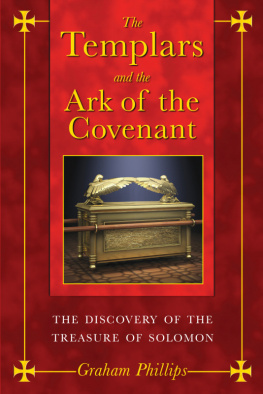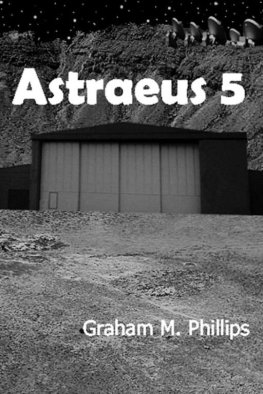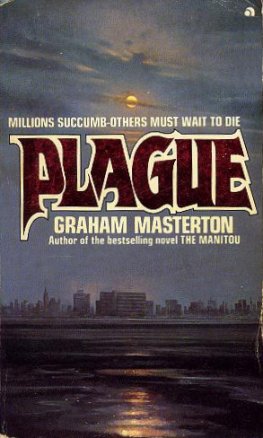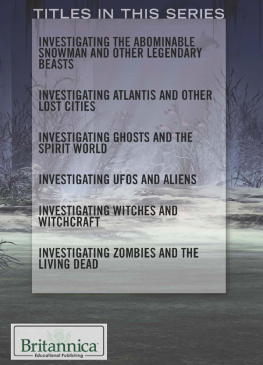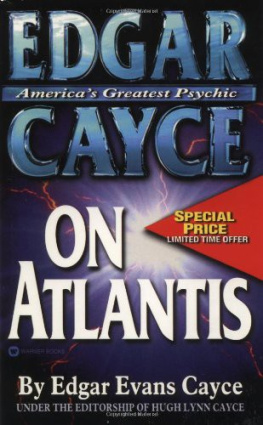Graham Phillips - Atlantis and the Ten Plagues of Egypt
Here you can read online Graham Phillips - Atlantis and the Ten Plagues of Egypt full text of the book (entire story) in english for free. Download pdf and epub, get meaning, cover and reviews about this ebook. year: 2003, publisher: Bear & Company, genre: Religion. Description of the work, (preface) as well as reviews are available. Best literature library LitArk.com created for fans of good reading and offers a wide selection of genres:
Romance novel
Science fiction
Adventure
Detective
Science
History
Home and family
Prose
Art
Politics
Computer
Non-fiction
Religion
Business
Children
Humor
Choose a favorite category and find really read worthwhile books. Enjoy immersion in the world of imagination, feel the emotions of the characters or learn something new for yourself, make an fascinating discovery.

- Book:Atlantis and the Ten Plagues of Egypt
- Author:
- Publisher:Bear & Company
- Genre:
- Year:2003
- Rating:5 / 5
- Favourites:Add to favourites
- Your mark:
- 100
- 1
- 2
- 3
- 4
- 5
Atlantis and the Ten Plagues of Egypt: summary, description and annotation
We offer to read an annotation, description, summary or preface (depends on what the author of the book "Atlantis and the Ten Plagues of Egypt" wrote himself). If you haven't found the necessary information about the book — write in the comments, we will try to find it.
Atlantis and the Ten Plagues of Egypt — read online for free the complete book (whole text) full work
Below is the text of the book, divided by pages. System saving the place of the last page read, allows you to conveniently read the book "Atlantis and the Ten Plagues of Egypt" online for free, without having to search again every time where you left off. Put a bookmark, and you can go to the page where you finished reading at any time.
Font size:
Interval:
Bookmark:

Acknowledgments
Graham Phillips would like to thank Chris Stewart, Peter Hull, Simon Trewin, Emma Gibb, Ruth McIntosh, Laura Sujin, Talya Boston, Susy Behr, Wayne Frostick, Simon Cox, Billie Walker-John, Morven Knowles, Lucy Earle, Elizabeth Bond, Gordon Wise and Rodney Hale for all their help. Also, a particular thanks to Andrew Collins, without whose invaluable research this book would not have been possible.

For more information about Graham Phillips, his books, and his research, please visit his Web site at grahamphillips.net
Contents
List of Maps and Illustrations
CHAPTER ONE
Imprisoned for Eternity
In the early days of 1907, the wealthy American lawyer and amateur Egyptologist, Theodore Davis, was leading an archaeological expedition in Egypt's Valley of the Kings, just across the Nile from the ancient capital of Thebes. His team included his cousin Emma Andrews, who acted as his personal assistant, the painter Joseph Lindon Smith, who was there to visually document any new discoveries, and the professional archaeologist Edward Ayrton. On 11 January, Ayrton was busy at the northern end of the valley, organizing a team of local workers to clear away a mass of debris that had been strewn around the tomb of Ramesses IX by excavators a few years before. About thirty feet to the south of the tomb's entrance, where the rock face was almost vertical, the workers unexpectedly discovered a deep in-filled trench that had been cut into the hillside centuries ago. Ayrton initially assumed that they had uncovered a ceremonial gully which originally formed part of Ramesses' tomb. However, when they began to unearth pieces of broken pottery predating Ramesses' three-thousand-year-old tomb, it quickly became apparent that the trench must be part of a second and older excavation an undiscovered tomb.
After further digging revealed a flight of ancient carved steps, the gang continued working all night, uncovering a stairwell and exposing the stone lintel of the outer entrance to a buried tomb. For a whole week, hour after hour in the dry desert heat, Ayrton kept his men hard at work, removing the rubble from the archaic passageway. Finally, after some twenty-one steps were uncovered, leading deep into the cliff, the workmen came to a solid barrier, an intact limestone wall sealing an entrance two and a half metres high. Delighted, Ayrton realized the implications the tomb was undisturbed. Yet there was something strange! Usually the entrances to such tombs were embossed with the royal seal of the occupant. Here there was no such seal, just a bare wall concealing an entrance carved deep into solid rock.

An account of the discovery survives in the diary of Emma Andrews, now in the Metropolitan Museum in New York. She tells how almost at once arguments erupted. Ayrton summoned Davis, who in turn was obliged to inform Arthur Weigall, the representative of the Antiquities Service in Cairo, who immediately arrived to oversee the excavation. Ayrton wanted to waste no time opening the tomb, but Weigall urged caution: the surrounding rubble should be carefully sifted for important archaeological clues before they were forever destroyed by further digging. Davis agreed. As the number of undisturbed tombs found in Egypt could be counted on one hand, the discovery was of immense importance and he wanted an addition to the team: the experienced archaeologist, Howard Carter, who was already in Egypt and staying in nearby Luxor.
Ayrton objected furiously. He and Carter had both been trained by the father of British archaeology in Egypt, Sir W.M. Flinders Petrie, and had since become bitter rivals. Four years earlier, while working for Davis, Carter had beaten Ayrton in a race to discover the tomb of the pharaoh Tuthmosis IV, which contained the most complete war chariot yet found. Carter had thus become the Egyptologist at the centre of world media attention. Other tombs had since been discovered, but they had been empty, long ago stripped of their treasures. Ayrton now had an intact tomb, and he was not prepared to have Carter upstage him yet again. Indeed, Ayrton was sure that they had found the very tomb for which Carter himself was so intrepidly searching: the tomb of the pharaoh Tutankhamun, a shadowy figure from Egyptian history about whom almost nothing was known. The previous year a small cup bearing Tutankhamun's name, together with other materials used in the king's funeral, had been found nearby, leading Carter to believe that Tutankhamun's tomb was somewhere in the vicinity.
Emma Andrews' account is vague as to precisely who ordered the tomb to be opened and the reports of all those involved differ. It is doubtful that Emma herself knew the truth as she was staying on Davis' boat in Luxor and was therefore not present at the time. From what can be gathered, however, it seems that someone, probably Ayrton, ordered the workmen to break down the wall on the night of 18 January. According to Weigall, next morning he and Davis arrived, furious to find Ayrton staring into the dark, gaping hole. Anger soon gave way to astonishment when they saw what lay behind the wall. This was certainly no ordinary tomb. From previous experience, an access corridor should lie directly beyond the bricked-up entrance, yet here there was a second wall, set in mortar and covered with an incredibly hard cement. This time there was a seal. The plaster bore an oval impression depicting nine bound captives, over which squatted a jackal: the god Anubis, the eternal protector of the dead, a device common to tombs of the fourteenth century BC.
An unprecedented double barrier! The three forgot their differences and began talking excitedly. There must be some religious significance to the second wall, some aspect of Egyptian funerary belief that no one had previously encountered. It was surely the tomb of someone very special. But who? The jackal seal should have been accompanied by a second seal bearing the name of the pharaoh, yet there was none. Excited by what they had found, Davis was now impatient to enter the tomb, and even Weigall no longer objected. Some of the Egyptian workmen, however, became agitated. Those who had worked on other excavations in the Valley of the Kings knew there was something strange about this tomb. Some voiced concern over unfounded rumours of deadly booby traps concealed pits or crushing stone blocks while others were afraid of dangers of a less earthly kind.
In ancient Egypt the afterlife was considered the exclusive domain of the rich and powerful. For the ancient Egyptian, immortality was not determined by moral conduct during life on earth, but was secured by a kind of hereafter insurance. The body was preserved by ritual mummification to ensure the spirit a place in heaven, and it was entombed with its possessions to enrich the life to come. As Egypt grew in power, so did the affluence of its ruling elite, and likewise the treasure hoards of its dead. Tombs became depositories of amassed fortunes to be protected from intrepid thieves, ever prepared to risk capture, torture and brutal execution to plunder the wealth of departed kings. The sepulchres of the nobility became ever more elaborate in an attempt to thwart the tomb robbers: impregnable pyramids, fortified mausoleums, and secret vaults buried deep underground. To whatever plan, concealment or invulnerability, Egyptian tombs were always constructed with one purpose in mind to keep intruders out. But what Davis and Ayrton had unearthed was an Egyptian tomb unlike any discovered before or since. It was constructed to keep someone or something trapped inside.
Next pageFont size:
Interval:
Bookmark:
Similar books «Atlantis and the Ten Plagues of Egypt»
Look at similar books to Atlantis and the Ten Plagues of Egypt. We have selected literature similar in name and meaning in the hope of providing readers with more options to find new, interesting, not yet read works.
Discussion, reviews of the book Atlantis and the Ten Plagues of Egypt and just readers' own opinions. Leave your comments, write what you think about the work, its meaning or the main characters. Specify what exactly you liked and what you didn't like, and why you think so.

